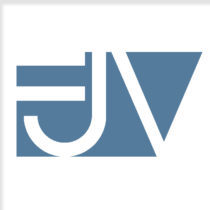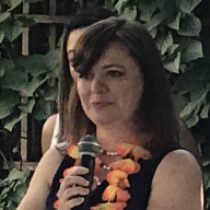Landscape Architecture for Landscape Architects › Forums › GENERAL DISCUSSION › Portfolio Critique Thread
- This topic has 1 reply, 27 voices, and was last updated 14 years, 2 months ago by
 Noah Mabry.
Noah Mabry.
-
AuthorPosts
-
August 14, 2010 at 5:36 pm #168704
 Tim ZhangParticipant
Tim ZhangParticipantI did my portfolio in Photoshop. I saved them to 150 pix/inch, in case they zoom into the pages. I then saved them as Jpegs. On computer it’s rather clear since our monitors display 72 dpi. Each of my files come out to around 750kb. I’m pretty sure I’m doing the wrong way since I shouldn’t even be doing page layouts in Photoshop at first place, but it works.
August 18, 2010 at 7:58 pm #168703 Frank VarroParticipant
Frank VarroParticipantI’ll see what I can do to get this thread going again with the latest iteration of my portfolio.
This is a complete overhaul from what I had been using, and I’m hoping it provides the right balance of pop and professionalism- something to make it stand out, while showing that I can put together a decent board/sheet once I am hired.
Let me know what you think!
August 18, 2010 at 8:04 pm #168702 Frank VarroParticipant
Frank VarroParticipantI made my pages in PShop as well (InDesign just fights fine tuning a little to much sometimes, and you can’t do the same image tweaks, which my new layout really needed). I made mine 11×17 300 dpi, so when it comes time, I can print them hardcopy at a kickass res. Then I resized to 100 dpi in photoshop, and printed the page to PDF. Doing it this way took my individual pages from 3 megs to 1, but left the text really crisp and clear. As you can see, my e-folio is going to be 4 11×17 pages (about 4.6 megs), but I will easily have the ability to send additional pages either E-copy or hardcopy if requested.
August 20, 2010 at 2:22 am #168701 Amy VerelParticipant
Amy VerelParticipantI LIKE IT! 😀
August 20, 2010 at 5:30 pm #168700 SousukeParticipant
SousukeParticipantHow familiar are you with InDesign? Once you learn most of the tricks, you will find that you can use Photoshop seamlessly with InDesign. For instance if you need to tweak a photo just make the adjustments in PS and then update the link in InDesign.
In terms of resolution that can be changed on the fly quickly in the export PDF settings. So leave everything at 300 (or if you are sending to a proper printing press later, 1200) and then just tweak the PDF export settings depending on your needs.
August 21, 2010 at 4:46 am #168699 Tim ZhangParticipant
Tim ZhangParticipanthm… i like it… i love it… I GATTA HAVE IT
August 23, 2010 at 7:06 pm #168698 William J. BlountParticipant
William J. BlountParticipanti’m new here, but i’ll play this game. This is only my sophomore portfolio: http://issuu.com/dra2120/docs/design-portfolio
August 24, 2010 at 3:05 pm #168697John.Dallinga
ParticipantFrank,
As an initial impression, I think your portfolio effectively displays your proficiency in a broad range of skills. You provide a nice mixture of projects for the viewer to consider. It sounds like you might still be working on additions to this and I do hope there are more for a couple of reasons. Overall, the format of the pages is good. The amount of text seems adequate for conveying a summary of the intent of the work. Everything has room to breathe.
There are a couple general things that can be improved and a few specifics that subjectively I might consider as well.
-For a landscape architect, your portfolio is part of your resume. That means you should consider how you communicate through it just as important as you do through your resume and cover letter. I would tighten up the language in your project descriptions by using the action-type words (facilitate, participate, conduct, etc.) people recommend using in cover letters. It will sound more professional and give you more space to highlight specific aspects of the projects.
-This is was mentioned previously on this thread and I am currently in the process of integrating it into my own portfolio: PROCESS. Out of the four pages, there was only one image of process or concept (Concept diagram for the U of Minn). How did you come up with that particular scheme? Were there alternatives you considered? What made that one the best? Besides, it can be used to display your ability to generate ideas quickly in the field or in studio. Also, you mention the contemporary campus mall as being a counterpoint to the Northrop mall. A reference image might be helpful in supporting this concept.
-A huge upside to your examples is their clarity and color. The renderings are vivid and the textures fit into the scenes effectively. The residential plan is very rich, which makes it a very attractive image, though the joints of the hardscape texture might be a bit strong. In addition, each tone is equally rich. You might play around with lightening someof the existing areas to allow the designed portions to pop or add subtle color detail to planting beds to suggest specific species from your plant palatte.
Keep up the good work!
August 29, 2010 at 4:01 pm #168696 Cliff SeeParticipant
Cliff SeeParticipantjust a thought about online portfolios – has anyone thought about just using the Land8 photo viewer as a quick portfolio?
one can create a ‘portfolio photo album’, and send potential employers directly to your land8 homepage link to have a look.i see that as an alternative while working on a separate portfolio. of course, there may be a slight downside, a network site shows more than a portfolio and resume, but this is a site for professionals..
hmmm… as a matter of fact, maybe the Land8 guys could have a ‘portfolio-category’ (similar to the forums, events, jobs etc) where any member can invite an employer to interface direct to a portfolio online…?
-cliffAugust 30, 2010 at 6:07 am #168695 Tim ZhangParticipant
Tim ZhangParticipantI agree with this, maybe just a series of images with description boxes under them. Maybe a resume area on top of page too. Might as well add linkedin.com style network area too.
August 30, 2010 at 4:52 pm #168694 Frank VarroParticipant
Frank VarroParticipantThanks for the tips! The language is always something I am tweaking, and the action verbs is a good tip that I always seem to forget.
I would love to include more process images, and I am including more on some of the additional 10 sheets I am finishing now, but realistically I just don’t have a lot of it still. Its something I’m not thrilled about, but I’m trying to use the little I have to maximum effect.
For the renderings, I use individual plant patterns for any designs that have a planting plan, the design in this part of my portfolio didn’t involve and actual planting plan, just basic vegetation type layout.
Thanks again for the tips, I’ll put more sheets up soon.
September 13, 2010 at 11:13 pm #168693 ncaParticipant
ncaParticipantMy initial impression is that the blueprint background is a bit distracting. Also, using old style blueprinting can mean a number of different things to the reader in my opinion. One interpretation might be that the author is out of touch with current practice, while another may be that they are very well practiced, paying homage to the days of yore, perhaps.
The BP background seems to be driving your layout, which may be unfortunate because I would like to see some of your drawings larger, especially process.
Overall, you are showing a nice range in skill and capability. Nice Work!
August 1, 2011 at 2:57 pm #168692Peter Coyle
ParticipantHello! I wanted to post my portfolio for anyone to please review for content and layout. I need to send it out asap and would love some peer review. Thanks in advance!
-Peter
NB: This is a low-resolution copy so smaller text will not be legible.
August 1, 2011 at 9:13 pm #168691 Roland BeinertParticipant
Roland BeinertParticipantI’ve been told several times that blurbs will get ignored unless they’re short. During an interview, large blurbs may distract from what you are saying. I try to say as much as I need to in a few sentences.
August 2, 2011 at 11:48 am #168690 mauiBobParticipant
mauiBobParticipantStart using a Mac computer and suddenly everything fall on your lap with ease!! Money will grow on trees in your yard.
I don’t know why I’m doing this. You said you have some experience, but your work reads like a student portfolio. Put those fancy, fantasy, imaginary plans to bed, permanently. It might be nice graphics, so show only two sets and time to put on some big boy pants. Show me a project from concept form to completed construction and what you did in each phase or scope of work. Be honest. No finished work? How about from concept to construction docs. Again, be honest in what you actually did throughout the project.
And a hint about those non-call backs from firms. Sometimes its not really your fault or you lack of skills. They may actually like your work, but that’s only half the battle. The interviewer or firm may not see you fitting in with their current group. It happens, you know…life happens.
-
AuthorPosts
- You must be logged in to reply to this topic.


